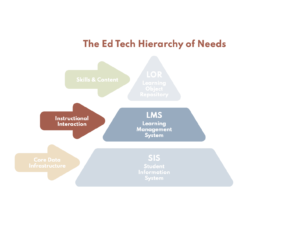Innovation Stack
Here are the elements of an edu-innovation ecosystem based on a couple interesting hallway conversations at ASU SkySong Edu Innovation conference:
1. Open API data, assessment and content layer: probably a combo of open edu-resources (OER) and low cost disaggregated proprietary layers
2. Development studio/mash-up space: combo of TechHub (announced by Pearson in London) and Starl with focus on free and commercializable applications
3. Research: access to large networks of students (made available by parter orgs) would enable rapid deployment of small & large scale randomized controlled trials
4. Access to capital: venture and philanthropic probably structured as $100-250k convertible debt; could include several buckets focused on neuropsychology
5. App store: web applications available for free or low cost single user adoption with info/contacts for institutional adoption
Bror Saxberg, Kaplan, noted that despite being held at an R1 university, there were no learning scientists present. In contrast, Bror said you’d never find a university cardiovascular conference on heart disease without consideration of molecular biology of that disease, but we don’t leverage what we do know about the neuro-psychology of learning and aren’t asking the research questions we should to produce the innovations we need. In the stack above, there’s clearly opportunity for a neuro-psychology of learning strand including research and funding.
Eli Broad often suggests that we need a DARPA for learning–that’s part of the picture–but it needs to be connected to a little venture savvy like Bill Gross’ Idea Lab. The ASU conference was evidence that there’s enough interest in early stage learning investments that a couple variations on the innovation stack outlined above are now possible.







0 Comments
Leave a Comment
Your email address will not be published. All fields are required.